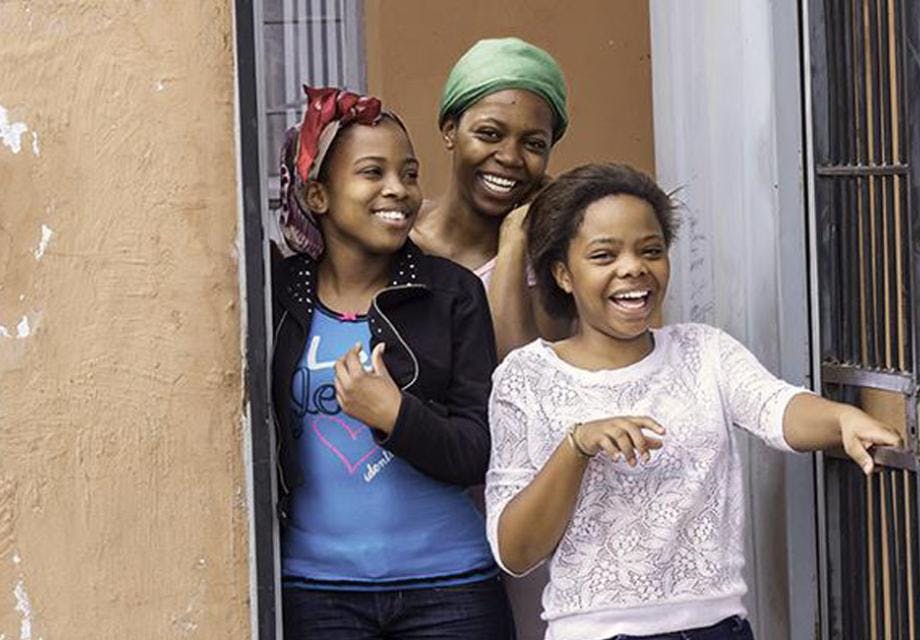Young adolescent girls are benefitting from US-led DREAMS initiative in Africa
Caitlin Mahon
08 November 2019
Ambitious HIV and sexual health initiative, DREAMS, is successfully reaching young adolescent girls in Kenya and South Africa, one year after implementation.
An evaluation of DREAMS in Kenya and South Africa has found younger adolescent girls are benefiting most from the HIV prevention programme, and are taking up multiple-interventions.
Established in 2015, DREAMS delivers a combination of biomedical, behavioural and structural interventions to reduce HIV infection among adolescent girls and young women in ten sub-Saharan African countries.
To evaluate its impact after the first year, researchers selected three diverse settings, all of which began implementing DREAMS in 2016.
The first evaluation took place in urban, informal settlements in Nairobi, Kenya, involving around 1,680 10 to 22-year-old females. The second took place in uMkhanyakude in rural KwaZulu-Natal, South Africa, involving around 2,100 13 to 22-year-old females. The third was in Gem in rural Siaya county, western Kenya, where population-wide survey data was analysed.
Because DREAMS also aims to reach those who impact on adolescent girls and young women’s sexual and reproductive health, researchers also surveyed men aged 15–34 years (the age group most likely to be the partners of adolescent girls and young women) and older women and men in each setting.
The findings suggest that awareness and uptake of DREAMS were high among adolescent girls and young women of all ages after one year of implementation.
The programme was found to be particularly effective at reaching adolescent girls before the age of 18, when HIV incidence starts to rise rapidly among this group and before most young women in these settings access health services for the first time, often with their first pregnancy. However, reaching older, out-of-school adolescent girls and young women, and others who impact on adolescent girls and young women’s sexual and reproductive health, was found to be more challenging.
Across all age groups, the majority of adolescent girls and young women accessed multiple DREAMS’ services, typically two or three (known as ‘layering’). Packages tended to include individual-level interventions, such as HIV testing and youth-friendly sexual and reproductive health services, and contextual-level interventions designed to result in supportive behaviour from male partners and families.
In both Nairobi and uMkhanyakude, uptake of individual and ‘layered’ interventions was highest among females aged 13/15–17 years, compared to 18–22 years. In Nairobi there was high receipt of DREAMS interventions, including multiple interventions, among 10 to 14-year-olds – a stage dubbed the ‘window of opportunity’ by UNICEF.
HIV testing was the most accessed intervention in Nairobi and Gem (77% and 85%, respectively), and school-based HIV prevention in uMkhanyakude (60%). However, few accessed all primary interventions intended for their age group.
In regards to male partners and wider community members, awareness and uptake of DREAMS interventions, such as cash transfers and parent/caregiver programmes, was low. Among male partners, the exceptions were HIV testing services and school-based HIV education.
In both Kenya and South Africa, DREAMS was found to be particularly effective at reaching adolescent girls and young women with socio-economic vulnerabilities, although less so for those who were out of school than those in school.
Being invited to participate in DREAMS was less common among adolescent girls and young women who had ever had sex or ever been pregnant. However, this may reflect the fact that this sub-group was already engaging in pre-existing antenatal care and reproductive health services. This group was more likely than other sub-groups to take advantage of multiple interventions when they did engage with DREAMS.
After one year of implementation, DREAMS has shown promise for delivering multiple combination prevention interventions, at scale, and outside of a trial environment. The results reveal challenges in reaching older adolescent girls and young women, and that ‘layering’ to reach this group may take time. Lessons here can be learnt to maximise the benefits of combination prevention programmes generally, and within the context of DREAMS.
Get our news and blogs by email
Keep up-to-date with all our latest news stories and blogs by signing up to the Be in the KNOW news digest.
